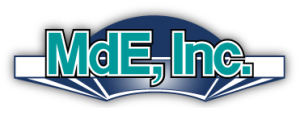In the dynamic landscape of corrections, where the safety of both inmates and staff is paramount, maintaining accurate and efficient employee records is indispensable. Yet, many correctional facilities continue to grapple with outdated and cumbersome record-keeping systems that impede productivity, compromise security, and hinder accountability. Let’s look at why many Corrections facilities are revamping their employee records management systems for achieving a more streamlined, transparent, and effective approach.
The Current Landscape: Challenges and Limitations
Traditionally, corrections employee records management has been characterized by fragmented systems, paper-based documentation, and manual processes. This antiquated approach not only consumes valuable time and resources but also increases the risk of errors, inconsistencies, and compliance breaches. Moreover, the lack of integration between disparate systems often results in data silos, making it difficult to access critical information and generate comprehensive reports in a timely manner.
Reliance on outdated technologies heightens security vulnerabilities, leaving sensitive employee data susceptible to breaches, unauthorized access, or loss. In an era marked by concerns about data privacy and confidentiality, such vulnerabilities pose a significant liability for correctional facilities, exposing them to regulatory penalties and reputational damage.
The Case for Change: Benefits of Modernization
Revamping corrections employee records management systems offers a myriad of benefits, ranging from enhanced efficiency and accuracy to improved transparency and compliance. By transitioning to digital platforms and integrated databases, correctional facilities can streamline record-keeping processes, automate routine tasks, and facilitate real-time access to up-to-date information.
Moreover, modernized systems enable better tracking and monitoring of employee performance, training, certifications, and disciplinary actions. This not only promotes accountability and professionalism but also facilitates informed decision-making and resource allocation within the organization. Digital records are inherently more secure than their paper-based counterparts, with built-in encryption, access controls, and audit trails to safeguard sensitive information from unauthorized access or tampering.
Key Strategies for Revamping Corrections Employee Records Management
- Comprehensive Needs Assessment: Before embarking on the overhaul process, correctional facilities should conduct a thorough assessment of their existing records management systems, workflows, and pain points. This involves soliciting feedback from frontline staff, administrators, and IT personnel to identify inefficiencies, gaps, and opportunities for improvement.
- Investment in Technology: Leveraging modern technology solutions such as cloud-based platforms, enterprise resource planning (ERP) systems, and records management software liked MdE’s ERM software can revolutionize corrections employee records management. These solutions offer scalability, flexibility, and robust features for document storage, retrieval, version control, and collaboration, empowering staff to work more efficiently and effectively.
- Integration and Interoperability: To maximize the value of new technology investments, correctional facilities should prioritize integration and interoperability between disparate systems and databases. This enables seamless data exchange and synchronization across departments, eliminating silos and ensuring consistency and accuracy of information.
- Training and Change Management: Transitioning to a new records management system can require a concerted effort to train staff, communicate changes, and address concerns proactively. MdE’s ERM (Employee Records Management) software comes customized to fit your needs and is the most user-friendly program available today. Providing comprehensive training programs, user-friendly interfaces, and ongoing support can help mitigate resistance to change and foster adoption of new processes and tools.
- Continuous Improvement and Feedback Loop: The revamping process should not be viewed as a one-time endeavor but rather as an ongoing journey of continuous improvement. Correctional facilities should establish feedback mechanisms, performance metrics, and governance structures to monitor system performance, solicit user feedback, and iterate processes based on lessons learned and evolving needs.
Conclusion
In conclusion, revamping corrections employee records management systems is not just a matter of modernizing technology; it is a strategic imperative for enhancing efficiency, accountability, and security within correctional facilities. By embracing digital transformation, integrating disparate systems, and prioritizing data security and compliance, correctional facilities can pave the way for a more streamlined, transparent, and effective approach to employee records management. As custodians of public safety and steward of taxpayer resources, correctional facilities owe it to their staff, inmates, and stakeholders to embrace innovation and adopt best practices in records management. Check out MdE’s ERM software as a solution for a revamped system.


